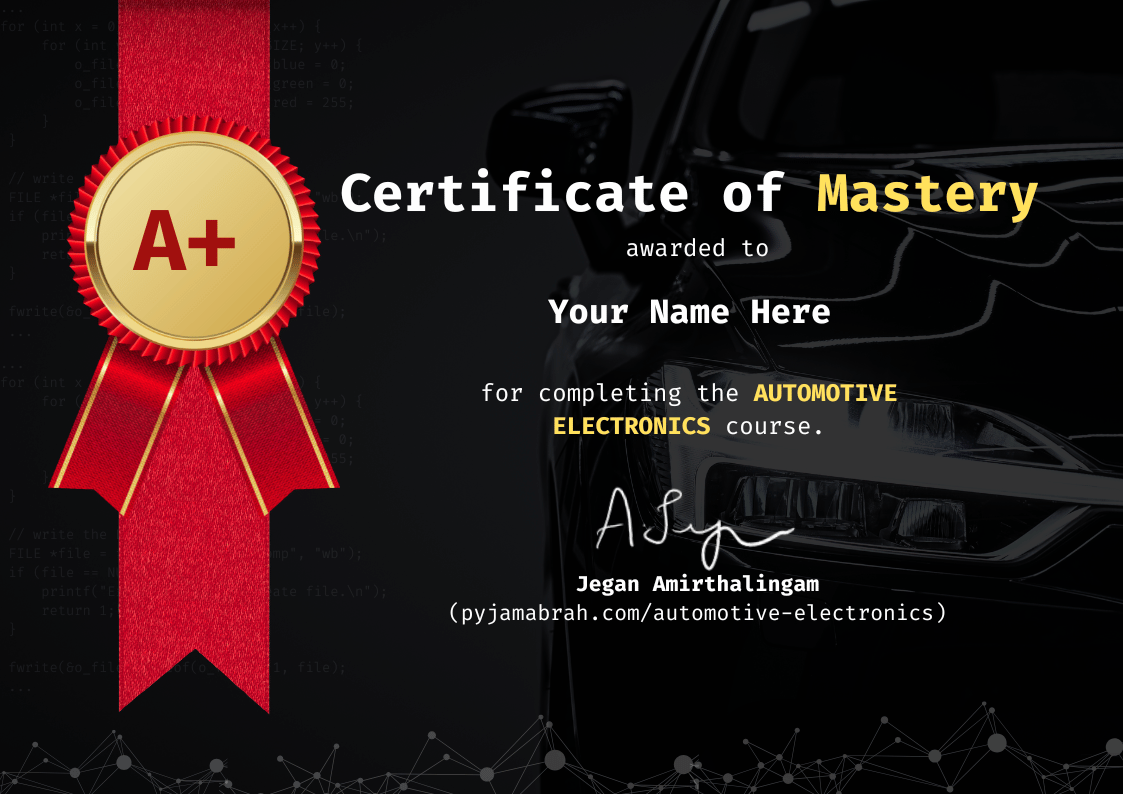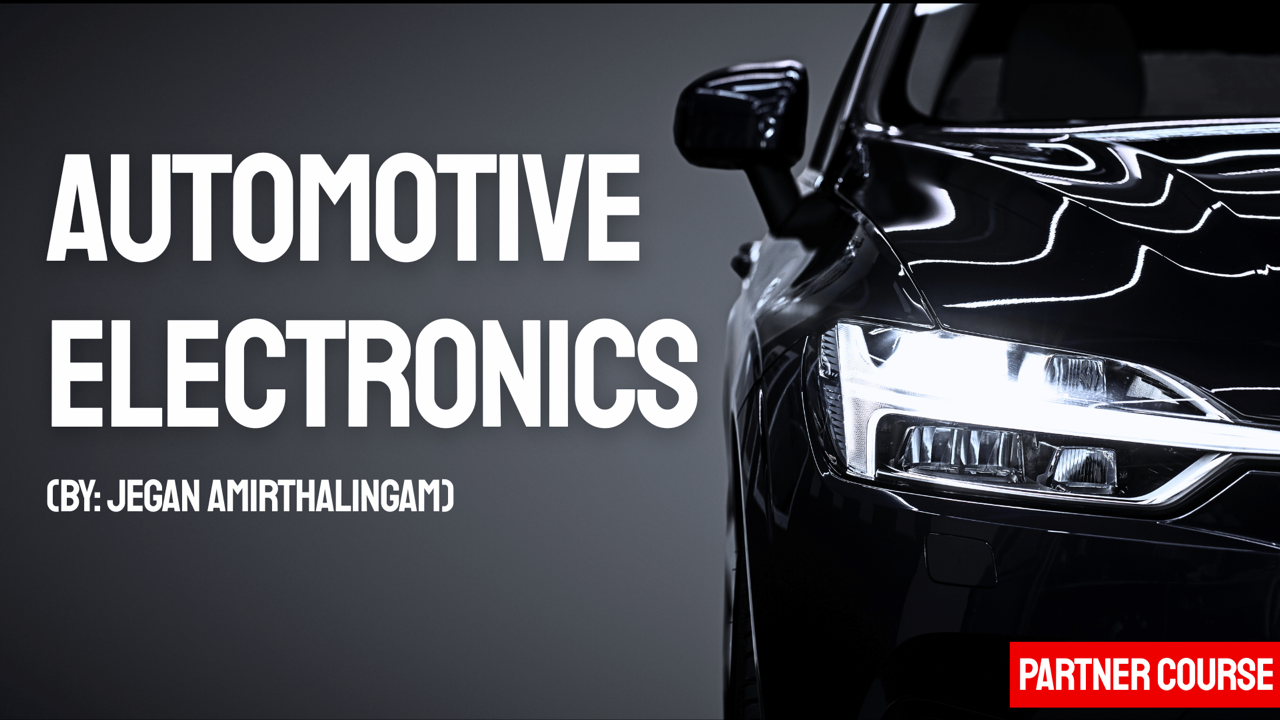Automotive Electronics
Note: This is a Partner Course and NOT included in the Library Access!
This course provides a structured, end-to-end understanding of modern vehicle electronics — from foundational E/E architecture and sensors to advanced vehicle diagnostics, software stacks, and the latest automotive trends. The curriculum blends theory, systems engineering, and hands-on demos to provide a broader perspective on roles in automotive embedded systems, diagnostics, and E/E system development.
This program is ideal for engineering students, automotive professionals, and embedded system developers who want to explore the automotive system and software development ecosystem. It helps participants understand the industry-ready skills required for the next generation of vehicles — including EVs, ADAS, and SDVs.
Bestseller Beginner Intermediate
(4.9) 87 students enrolled.
Last updated: 26 October 2025 | English | 365 days Access.
includes
what you will master through the journey
contents and preview lectures ...
Introduction
Vehicle E/E Architecture
Automotive SDLC
Automotive STLC
Automotive Sensors
Automotive Actuators
Powertrain Systems
Vehicle Motion Control System
Vehicle Diagnostics
Vehicle Software Architecture
Current and Emerging Trends in Automotive Technology
Career opportunities in Automotive Embedded Systems
Demo Codes
What is so special about this course?
The Automotive Electronics course is first of its kind because it provides a complete system-level understanding of how modern vehicles work — not just isolated topics. It starts with E/E architecture, the backbone of every vehicle, and builds upward through sensors, actuators, diagnostics, control strategies, and software stacks.
Unlike traditional courses, it blends hardware, software, and system engineering to mirror real OEM and Tier-1 workflows. It also covers future-focused technologies like EVs, ADAS, AI applications, and Software-Defined Vehicles (SDV), ensuring learners are aligned with industry evolution.
Hands-on demos such as EV bike simulation, complementary filtering, actuator modeling, and path planning reinforce theory with practical exposure. Learners also gain familiarity with industry standards like AUTOSAR, ASPICE, and UDS, preparing them for real development environments.
Finally, the course provides complete technology overview, showcasing actual automotive development flows, typical job roles, and skill pathways. This makes it ideal for students, embedded developers, and professionals looking to enter or grow in the automotive embedded systems domain.
Certificate
The journey through the course is a challenging one! Our courses are packed with insights and will take time to sink in. You will be awarded with a Certificate of Mastery when you complete 95% of the course work.

What you see above is a sample certificate. The design of this certificate will be modified from time to time to make it more shiny and reflect the rightly earned pride!
There will always be a dedicated certificate identification number to verify it with us. This should enable anyone to check the authenticity of the certificate.
How this is different from Others
| Feature | Us! | Others |
|---|---|---|
| System-Level Perspective | ||
| Real Vehicle Relevance | ||
| Industry Standard Frameworks | ||
| Modular & Layered Learning Structure | ||
| Hands-On Demos on examples from EV, ADAS and System Design | ||
| Industry-Aligned Skill Mapping | ||
| Future-Ready Topics |
Instructors
Requirements
Who this course is for
FAQs
This course is created and delivered by a partner who is not a core member of the pyjambrah team. We need to compensate the partner based on the sales of their content.
Is this recommended for beginners?
Yes! The courses are taught as if the learner has no idea about the subject.
Do I need a special machine configuration to take this course?
No!
Can I change my email-id post purchase?
As much as we'd like to support that, your account will be linked to your email-id post purchase.
What name will be printed on the Certificate?
The name you use on the platform will be printed as is on the Certificate when it is generated.


